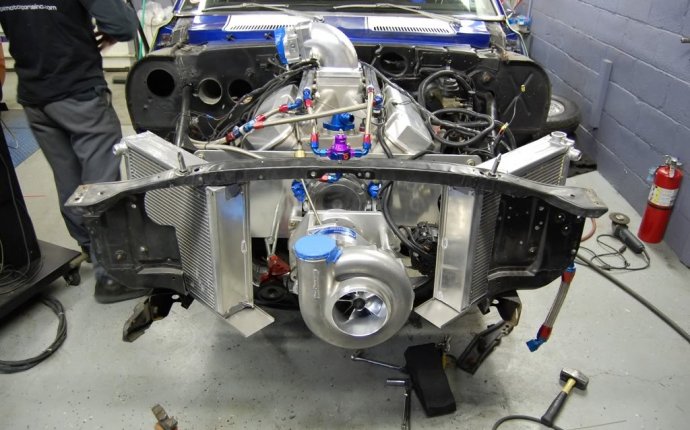
Race Car Cooling System Design
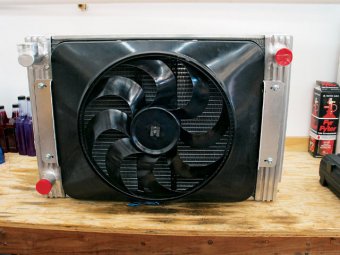
Don't Have A Meltdown! Learn All You Need To Know About Putting Together A High Performance Cooling System
Global warming? While the tree- huggers clamor over ex-Vice President Gore’s global temperature scare, we’ll lay odds that when summer arrives, car crafters will be more concerned about engine warming or, more accurately, engine overheating. Cooling systems are often the last item on the “let’s get it running” checklist. Unfortunately, radiators and cooling-system components qualify for afterthought status until there’s a problem. Most of the time, modified cars tend to have problems with low-speed cooling. But we’ve also seen many scenarios where 70-mph cruising under a midday sun that can really turn up the heat. We dove radiator-neck-deep into this subject and came up with a few cool solutions. Check ’em out.
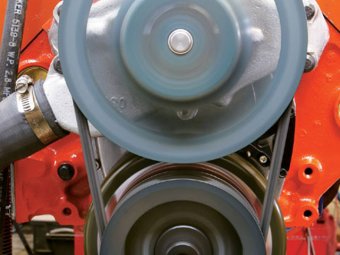 How Cool Do You Have To Be?
How Cool Do You Have To Be?
There are three basic parameters that determine cooling efficiency: radiator surface area, coolant speed through the system, and the amount of airflow through the radiator. These three functions determine the efficiency of the system as expressed in Btu of heat rejection per minute. Even a small problem with any of these variables will cause difficulties. Since this is a rather complex situation with dozens of variables, we’re going to just hit the high spots on how to make your cooling system more efficient.
The biggest limitation in terms of radiator surface area is the original vehicle itself. The radiator core support generally dictates the size of the radiator, along with the displacement of the engine and the horsepower it makes. Core support and engine size are obvious, but there is some voodoo science related to the horsepower number. Let’s say your car makes 1, 000 hp at 6, 000 rpm.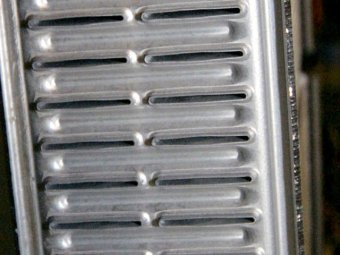 It’ll create a certain amount of heat at that power peak, but you are going to spend most of your idling around the pits or on the way to the grocery store. At idle, it’s likely that you are making less than 20 hp, which doesn’t really create a lot of heat. Manufacturers therefore must create a balance where the radiator can be large enough to handle the engine’s heat pontential yet still be small enough to fit in the car and be relatively inexpensive. Be Cool, for example, offers systems for most popular musclecars in 400, 700, and 1, 000hp applications.
It’ll create a certain amount of heat at that power peak, but you are going to spend most of your idling around the pits or on the way to the grocery store. At idle, it’s likely that you are making less than 20 hp, which doesn’t really create a lot of heat. Manufacturers therefore must create a balance where the radiator can be large enough to handle the engine’s heat pontential yet still be small enough to fit in the car and be relatively inexpensive. Be Cool, for example, offers systems for most popular musclecars in 400, 700, and 1, 000hp applications.
For an extreme example, we asked Be Cool’s Mitch Drouillard what he would recommend for a ’70 Mustang with an 800hp big-block. Be Cool actually offers a custom modular system that includes a monster 27-inch core-width radiator that is much wider than the stock radiator opening. This requires moving the battery to the trunk and includes a pair of 13-inch electric fans to maximize airflow especially in low-speed applications, and is efficient enough to handle this combination. The key is to buy a radiator with the largest core area that fits in the car with a capacity that will handle the Btu potential of your car’s engine size and horsepower.
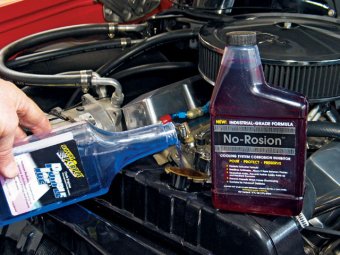 Coolant speed through a radiator is the second essential component. Production small-block Chevy engines from the ’60s and ’70s, for example, generally used a 1:1 pulley ratio that was designed for low-density radiators with 31/48-inch tubes. When a car is modified with an aluminum radiator that uses larger 1-inch-diameter tubes, it may be necessary to increase water-pump pulley speed for sufficient coolant velocity through the radiator. This increased speed is necessary to create turbulence in the tubes and expose as much coolant to the walls of the tubes as possible. This is where you may have to experiment with your vehicle to come up with the right drive ratio, but a ratio of at least 1:1 to as much as an overdriven 1:1.3 is a good place to start. Worst of all would be the combination of a 1-inch-tube aluminum radiator with a slightly slower-than-stock pulley ratio.
Coolant speed through a radiator is the second essential component. Production small-block Chevy engines from the ’60s and ’70s, for example, generally used a 1:1 pulley ratio that was designed for low-density radiators with 31/48-inch tubes. When a car is modified with an aluminum radiator that uses larger 1-inch-diameter tubes, it may be necessary to increase water-pump pulley speed for sufficient coolant velocity through the radiator. This increased speed is necessary to create turbulence in the tubes and expose as much coolant to the walls of the tubes as possible. This is where you may have to experiment with your vehicle to come up with the right drive ratio, but a ratio of at least 1:1 to as much as an overdriven 1:1.3 is a good place to start. Worst of all would be the combination of a 1-inch-tube aluminum radiator with a slightly slower-than-stock pulley ratio.
The most common musclecar cooling-system problems concern low-speed cooling, most often attributed to low airflow through the radiator. Assuming the radiator is sized properly and there is decent coolant speed, then increasing airflow at low vehicle speeds should remove sufficient heat from the radiator to keep the engine at a manageable temperature. Engine-driven fans can move a tremendous amount of air but are also compromised by slow engine speed at idle while delivering sufficient airflow at higher engine speeds.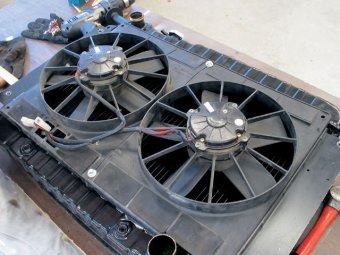 Electric fans have become popular with the OEMs because they can move enough air at low speeds to keep the engine cool, relying on vehicle speed to push air through the radiator at highway speed. This reduces parasitic horsepower losses at highway speeds by eliminating the engine-driven fan. While this may seem trivial, dyno testing in the May ’00 issue of Car Craft resulted in losses of 35 hp at peak horsepower from a simple one-piece, plastic, engine-driven fan. Clutch fans lost between 8 and 19 hp depending upon the clutch model, while a Flex-a-lite Black Magic electric fan driven by the alternator cost 1 hp. All these numbers were generated using a 496hp small-block Chevy at 6, 300 rpm.
Electric fans have become popular with the OEMs because they can move enough air at low speeds to keep the engine cool, relying on vehicle speed to push air through the radiator at highway speed. This reduces parasitic horsepower losses at highway speeds by eliminating the engine-driven fan. While this may seem trivial, dyno testing in the May ’00 issue of Car Craft resulted in losses of 35 hp at peak horsepower from a simple one-piece, plastic, engine-driven fan. Clutch fans lost between 8 and 19 hp depending upon the clutch model, while a Flex-a-lite Black Magic electric fan driven by the alternator cost 1 hp. All these numbers were generated using a 496hp small-block Chevy at 6, 300 rpm.
Radiator Basics
Let’s start with radiator materials. Our automotive forefathers were pretty sharp guys and used copper/brass radiators for a reason. Copper has an excellent thermal-conductivity rating. A copper-fin’s thermal-conductivity rating is more than 50 percent higher than an aluminum fin. Brass, which is an alloy of copper, is not as good a conductor as aluminum but is used for the tubes because of its strength. One difficulty with copper is that the lead solder used in older copper/brass radiators has a terrible thermal-conductivity rating, which limits the efficiency of lead-soldered radiators. So companies such as U.S. Radiator have instituted a newer process that improves efficiency by changing the flux and solder and its contact with the fins.









